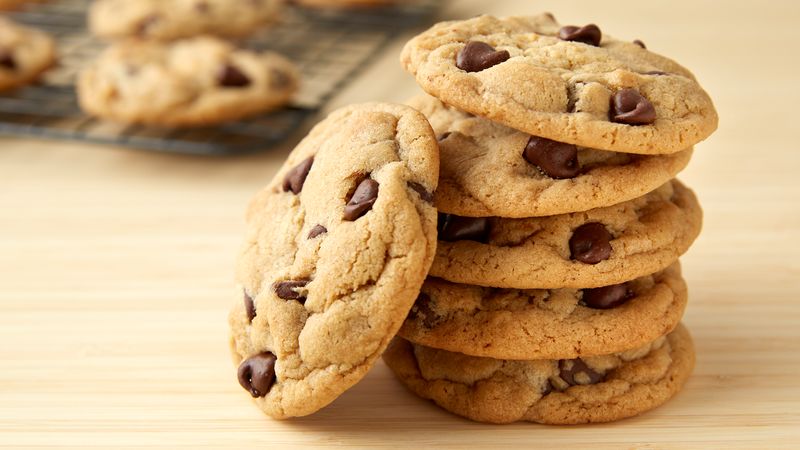 Baking cookies is always fun to do, right? On the contrary, it's not always super fun when changing an ingredient in the recipe like butter. I changed the phase of butter inside of my cookies and kept everything the same to see if that could change the shape, consistency, and taste of the cookies. In the mix, I had one with hard butter, melted butter, and room temperature butter. To have my butter be considered room temperature, I let it sit out for about 25 minutes prior to adding it to my mix so that it could be soft. I bet you're thinking that this was no major change, but if you keep reading you will find out otherwise! Yes baking cookies is fun and eating the cookie dough while the cookies are in the oven is tasty and great. This science is going to be looked at briefly and how fun it can be to make cookies.
Baking cookies is always fun to do, right? On the contrary, it's not always super fun when changing an ingredient in the recipe like butter. I changed the phase of butter inside of my cookies and kept everything the same to see if that could change the shape, consistency, and taste of the cookies. In the mix, I had one with hard butter, melted butter, and room temperature butter. To have my butter be considered room temperature, I let it sit out for about 25 minutes prior to adding it to my mix so that it could be soft. I bet you're thinking that this was no major change, but if you keep reading you will find out otherwise! Yes baking cookies is fun and eating the cookie dough while the cookies are in the oven is tasty and great. This science is going to be looked at briefly and how fun it can be to make cookies.Butter is a kind of a lipid, lipids simply put as a "fat". There are two different kinds of fat: saturated and unsaturated. Butter is an unsaturated fat, which means that all of the bonds are straight across with no bending because of its single bonds. A saturated fat means that at room temperature, butter is still a solid. Even though butter is a solid at room temperature, it doesn't mean that the butter is super hard or super soft. In my experiment, the butter at room temperature was extremely soft and the hard butter was extremely hard (hence why I called it hard butter, course.) This consistency of butter is super important.
| Chemical formula of butter *pictured at the top labeled SATURATED* |
Experiment and Recipe
Chocolate Chip Cookie Recipe:
- 2 bowls, a mixer, measuring cups and tablespoons, pan, non-stick spray on butter
- All-purpose flour
- Baking soda
- Salt
- White granulated sugar
- Brown sugar
- Vanilla extract
- Eggs
- Butter (melted, hard, room temperature)
- Nestle Toll House Chocolate Chips
| Example of how mix should look after using the mixer to mix in dough |
Following the mixing, when everything is mixed and distributed evenly throughout the mix, add dough onto a pan with non-stick butter sprayed on it and place in the oven for about 17 minutes until it is a golden brown.
Results
After all three trials, the cookie that had the tastiest, most consistent cookie was the one with hard butter. It was super fluffy, soft and crispy on the edges, every single ingredient in the cookie was accounted for. The melted butter and room temperature cookies came out very nasty and hard. The room temperature cookie came out super spread and was barely a cookie anymore! Meanwhile the melted butter cookie tasted like a full stick of butter. Want to know the science and reasoning behind this? I know you do! When butter is hard and completely solid, all of the particles in the butter is more concentrated (closer together). Therefore, when hard butter comes in contact with heat, everything is separating and melting at once which means that the butter is separating at a consistent pace making it better tasting since the ingredients are able to come together while the butter melts completely in the oven. On the other hand, room temperature and melted butter has their particles already spreading because they have melted/began melting. Due to the particles already beginning to spread, they are distributed unevenly within the butter because all of the particles and matter are starting to melt when they are ready opposed to everything melting at once in hard butter. This then effects the way that the other ingredients bond with the butter while baking. As a result, the cookie can be wider and the taste of a cookie can vary when changing butter’s state of matter.
| Melted butter inside of cookie |
| Hard butter inside of cookie |
| Room temperature finished product of cookie |

Comments
Post a Comment